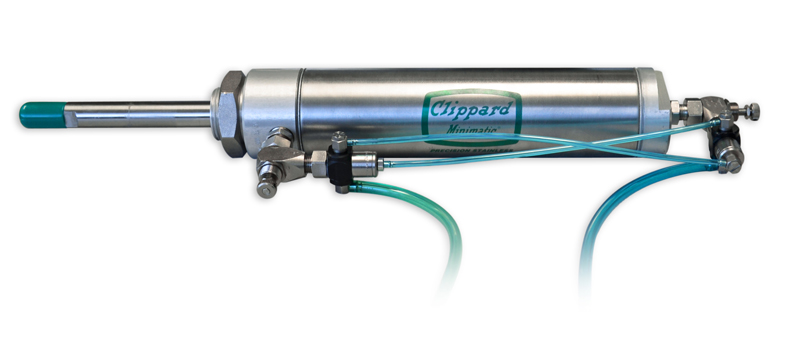How Do Pilot-Operated Check Valves Work?
How Do Pilot-Operated Check Valves Work?
Pilot operated check valves work by allowing free flow from the inlet port through the outlet port. Supplying a pilot pressure to the pilot port allows flow in the opposite direction. Air pressure on top of the poppet assembly opens the seal allowing air to flow freely. When the air flow stops, the poppet check the trapped air. When the valve is piloted, the trapped air is allowed to flow back out of the control valve.

In this demonstration, see the smooth, controlled motion that can be achieved with Clippard's pilot-operated check valves.
Watch the Tech Tip Video:
|
Air pressure comes in to one of the pilot chambers of the check valve and opens up the check valve. At the same time, it allows pressure to come over to the other pilot-operated check valve and pilot it open to allow the exhaust to flow out of the cylinder. Two meter out flow controls control the speed of the cylinder and a simple TV-4 controls both check valves. |
|


 Read More about Clippard's JPC Series
Read More about Clippard's JPC Series






